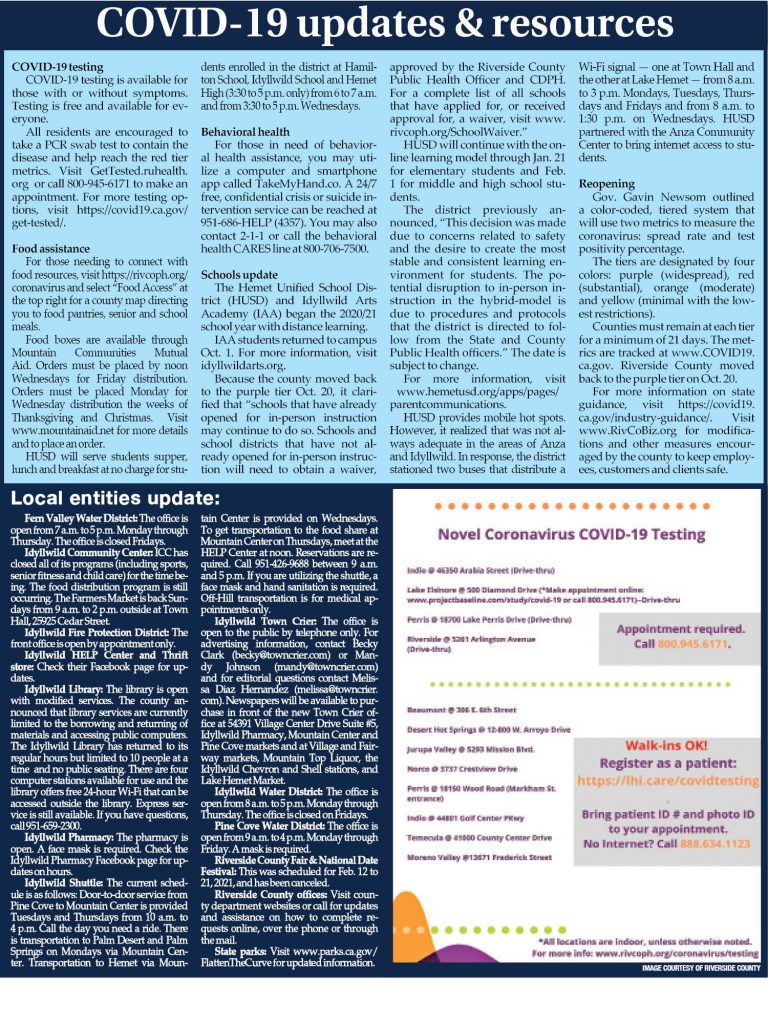IWD income up; well levels falling
At the Idyllwild Water District last week, the directors approved expanding the salary schedule from 10 to 14 steps. No other action was taken, but General Manager Tom Lynch and the board did discuss water conditions.
At the July meeting, the board had approved this salary action for just the wastewater supervisor’s position. At this meeting, the board approved the expanded salary scale for all positions.
Lynch assured the board this would not affect current budget projections.
“There will be a fiscal impact eventually. It will be a major cost to the district, “ noted Vice President John Cook. “Reluctantly, I see a need because we’re unable to recruit the best people.”
Once again, the water program had positive net income. In July, net income for the water program was nearly $29,000. Cook acknowledged that July and August are “Hosny’s favorite months.” Water sales tend to peak in these months and the corresponding high revenues benefit finances, Financial Officer Hosny Shouman confirmed.
“It’s nice to see a positive number after so many negatives,” Cook added. “Good to find income rather than a loss.” However, in the past year, the water program has had only one month (November 2015) where expenses exceeded water revenue and five months where the net income exceeded $20,000.
In water business, Lynch reported that the district was still in water emergency Stage 2. “Production increased because consumption is up from the previous months,” he said.
Since water consumption is up and Foster Lake remains empty, he had to operate more wells last month. The groundwater level for most of the wells declined from June to July, according to his report.
“This is a bellwether because we’re in a five-year drought,” Lynch stressed. “We’ll do all we can to not move into Stage 3.”
In July, IWD consumed 9.6 million gallons, which is 2.7 million more than in July 2015 but about 150,000 gallons less than two years ago. In the past four months, IWD production has gradually increased compared to 2015. Since January, IWD has produced nearly 47-million gallons compared to 43.4 million in the same seven-month period during 2015.
Compared to the 2013 baseline, which the State Water Resources Control Board uses, IWD consumption from January through July is down 17.7 percent. Lynch is using the SWRCB recommendation of a 20-percent decline for the urban districts as his goal for IWD consumers.
During directors’ comments at the end of the meeting, Director June Rockwell asked if the story on the Town Crier’s website reporting Lynch’s three failures to pass the exam for the State of California Water Treatment Grade II Operator Certificate was true.
In response, Cook described the question as vague and Lynch said it was a personnel matter and could only be discussed in private.
Later, Director Michael Freitas said he had requested the requirement for the Grade II when the board chose Lynch over another applicant in 2014. While Lynch had more administrative experience, the other person had several certificates and a lot of water experience, Freitas said.
“When we decided on Tom, I said, just to make sure I’d feel better and safer, let’s throw in the Grade II certificate,” Freitas said, explaining its purpose. When asked if he felt “better and safer” now, Freitas insisted that the state was wrong and Lynch had only taken the exam once. (See related story, this issue.)




